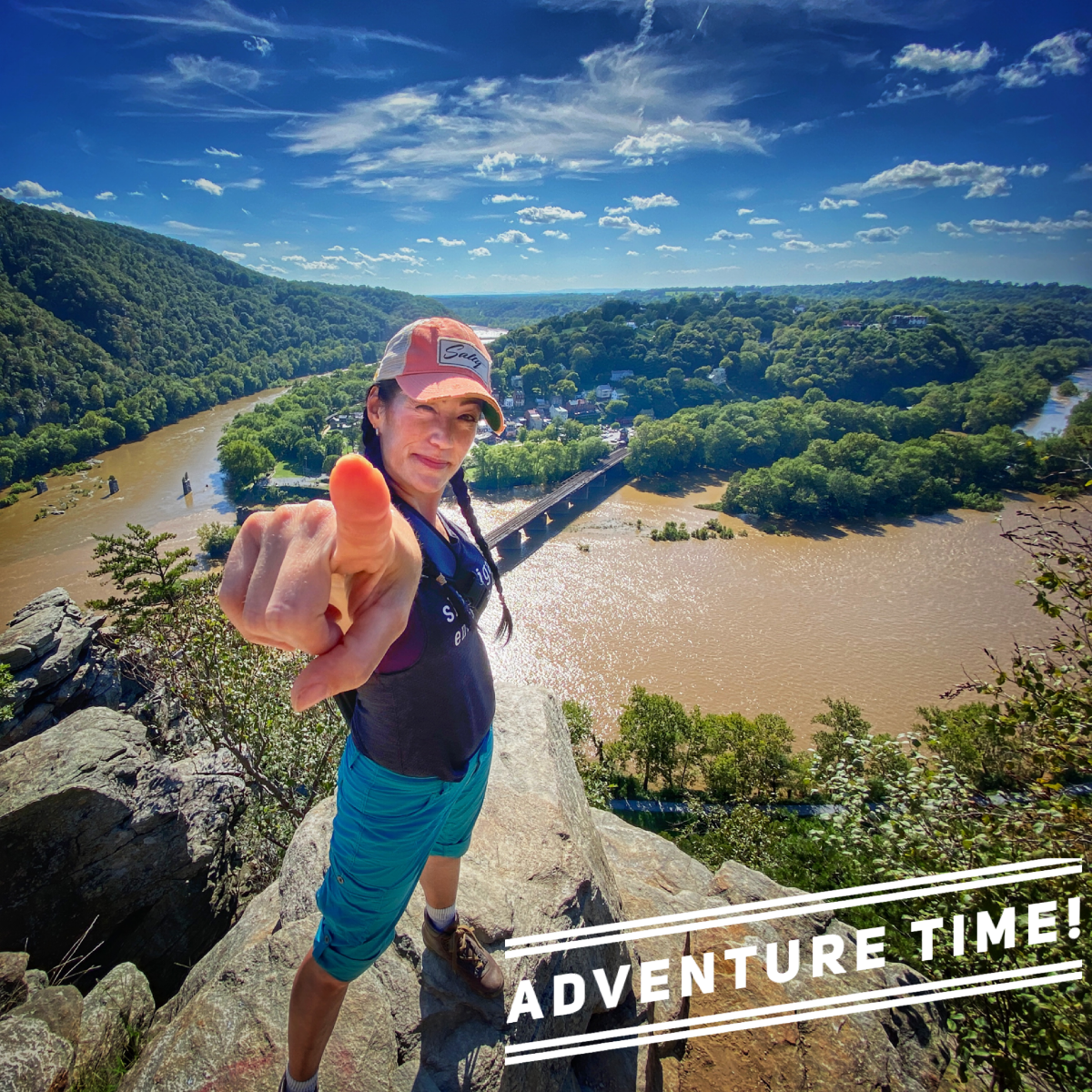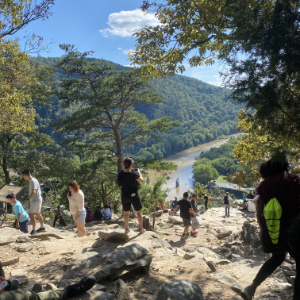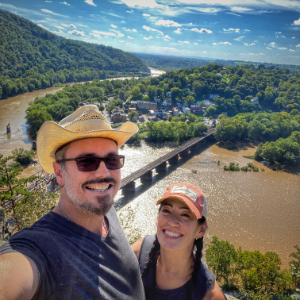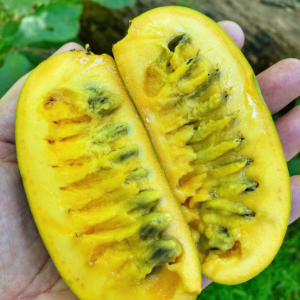
Do you ever find a way to adventure close to home?
Over Labor Day weekend, we decided to do a little exploring in our region. Specifically, we decided to check out Harper’s Ferry, West Virginia. I’ve heard about this town for years but I never made it out to visit it.
We picked a day with nice weather – warm, but not too hot – and we set out.
Harper’s Ferry, West Virginia is roughly 70 miles due west of our home in Baltimore, Maryland. It’s an area steeped in history. An interesting thing about Harper’s Ferry is that it sits at the meeting point of two major rivers and three states. Maryland lies to the northeast, Virginia to the southeast, and West Virginia to the west. The Potomac and Shenandoah Rivers meet and merge into the Potomac River that runs southeast past Washington, D.C.

Harper’s Ferry played a role in hastening the Civil War in the United States and, because of its strategic location, it changed hands several times during the course of the war.
These days it’s a moderately well-preserved historic town nestled into a fairly steep hillside. It has a picturesque main street that has some rundown, abandoned buildings tucked in with restored/preserved buildings. Tourist traps, small restaurants, and sweet shoppes cover most of the tourist attractions.
There’s not much to do in the town of Harper’s Ferry, but it seems that most people are there to hike or ride the bike trail next to the river anyway.
We wanted to hike to the overlook on Maryland Heights. This is a large rock outcropping that sits on the Maryland side of the river and basically looks over the merge point of the rivers. It’s a nice but steep hike that required a few catch-your-breath breaks on the way up and down.
Was the hike worth the view? You betcha!

Maryland Heights Overlook 
Happy Hikers!
It was surprising to see how many people were hanging out on the overlook. It was lovely to see families and friends out hiking and getting fresh air on what felt like the last weekend of summer. I was thrilled to see the overlook and finally understand why the area is such a popular destination.
But we didn’t dawdle on the overlook. Our mission was a little different. we were there to hunt for pawpaws.
What Is a Pawpaw?
This is a great question. It’s one I didn’t even know to ask until I met George who has a low-key obsession with pawpaws.
A pawpaw is a fruit native to North America and fairly common in the Mid-Atlantic where we live. The fruit is a greenish oblong fruit that can range in size but averages about the size of your palm or hand. The fruit inside has a custardy, creamy consistency that tastes like a mango and a banana had a baby. It’s very sweet and has been a favorite treat of locals since George Washington’s days.
The thing with pawpaws is, they are extremely fragile. They bruise easily, and though there are commercial cutlivars, they are mostly found in the wild. They don’t show up in grocery stores or on restaurant menus because the window for harvesting them ranges from two to four weeks. In other words, they are a bit of a rarity because you mostly have to hunt them, they are fragile, and they are only around for a short period of time.
There is an annual pawpaw festival (which was cancelled this year thanks to COVID19) that was on our bucket list for the year. Instead, since we heard rumors that people were finding ripe pawpaws, we decided to make our adventure – a Hunt for Pawpaws.
We did a little internet research on what environment pawpaws preferred (moist lowlands) and how to identify them (leaf shape). We also needed to know the best way to harvest the fruit.
The good news is, pawpaw is shockingly easy to identify. It has large diamond shaped leaves that are distinct enough to be visible from the window of a car driving highway speeds. In fact, I was able to spot them along the highway even before I was 100% sure I had the right tree.
Very distinctive.
The trees grow in clusters or stands since they need multiple trees around to cross pollinate. The fruit clusters in sets of three or five. Different trees will have variations in fruit that range from fruit size, flesh color, and flavor. It’s fascinating!
If you can reach the fruit, it should come off in your hand. If you can’t reach it, a nice firm shake of the trunk will let the ripe ones drop to the ground. This is efficient and practical for harvesting but results in more bruised fruit so you need to consideration your outcomes.
TIP: Don’t take the fruit that has dropped to the ground. Likely you will be fighting a lot of bugs for it.
As George embarked into the thickets and woods to find pawpaws, I opted to stand behind and lap up the sunshine. As I stood there, the most magnificent butterfly crossed my path. I called to George to come see this massive, black and white striped butterfly. It was a swallowtail butterfly and there were distinctive dots of red on the tail. It was nearly the size of my hand (though I have small hands) and may be the largest butterfly I’ve ever seen in the wild.
As I was describing the butterfly to George, we discovered (thanks Google!) that the zebra swallowtail butterfly is distinctive to anywhere that has pawpaw. It definitely felt like the universe wanted our hunt for pawpaws to be successful.

Pawpaws can easily be opened with a knife. They are filled with large, dark brown seeds that are very easy to separate out. The pulp is custardy and mango-banana like. It’s easier to eat with a spoon but you can also just dig in with your mouth. You’ll need plenty of water or hand wipes to get the sticky sweetness off your face!
Armed with a bunch of signs and tips from fellow pawpaw hunters, we stumbled on a bonanza of fruit. George harvested about two dozen fruits from different trees.
We were greedily sampling them as other hikers stumbled upon us. We took the time to answer some questions, introduce some fellow hikers to the history of the pawpaw, and have a wonderful discussion with an Indian family about custard apple. According to them, the flavor and consistency is very similar though the fruits look quite different.
It’s like being initiated into a secret society.
What Can You Do With Pawpaw?
A better question is – What can’t you do with pawpaw? The flesh freezes quite well and is notoriously good in smoothies. It basically replaces mango or banana in any recipe. You can make “ice cream” with it, use it in recipes that call for either of those fruits, or just enjoy it on its own.
It was a successful adventure and one that we are glad we took the time to do. If you find yourself in the Mid-Atlantic region some early fall day, consider Hunting for Pawpaw. I think you’ll have fun!
All photos by IG: @mobtowngeorge